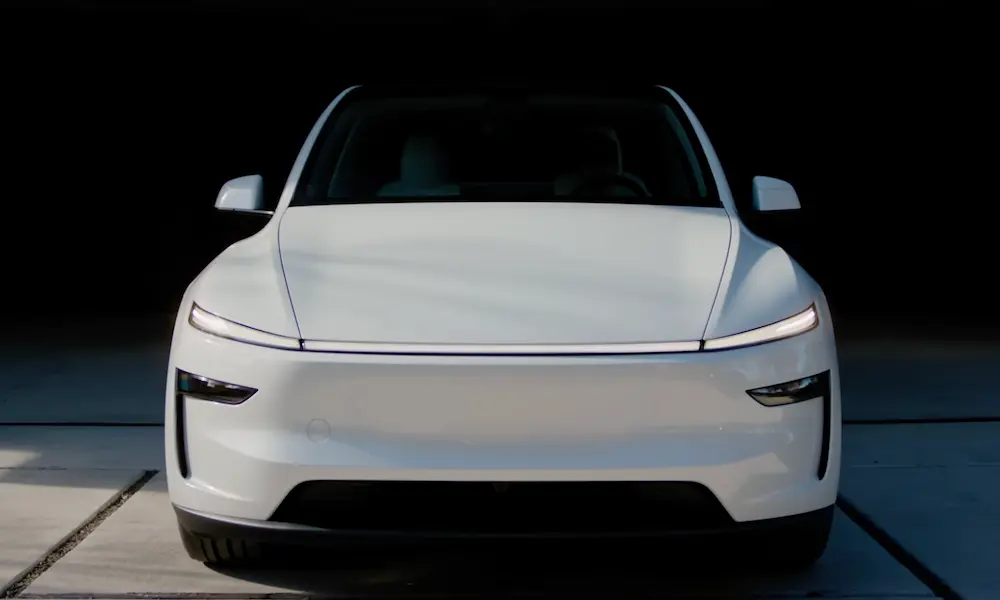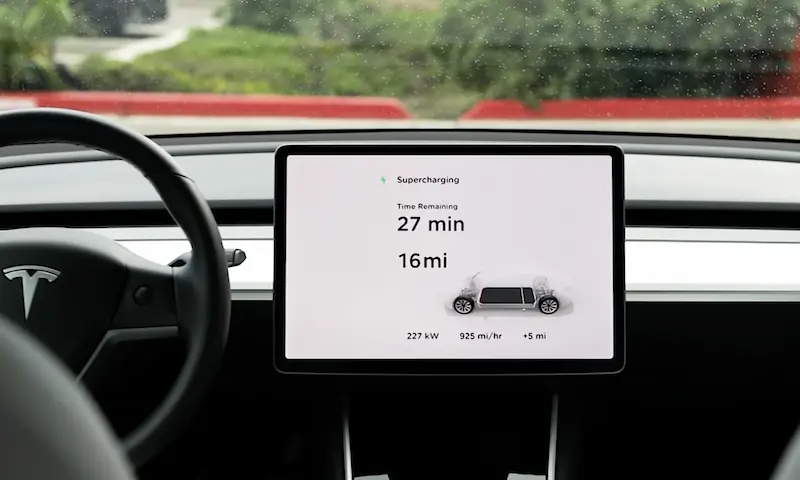Tesla’s in-house insurance offering promises lower rates through real-time driving data and vehicle-specific knowledge. But does it actually deliver value? If you’re wondering whether to switch to Tesla Insurance or stick with traditional providers, this comprehensive breakdown will help you make an informed decision based on your specific situation.
How Tesla Insurance Works
Tesla Insurance uses a fundamentally different approach than traditional insurers. Instead of relying on demographics, credit scores, or driving history, it primarily bases your premium on real-time driving data collected directly from your vehicle.
The Safety Score system monitors driving behaviors like:
- Hard braking frequency
- Aggressive turning
- Unsafe following distances
- Forward collision warnings
- Autopilot disengagements
In states with real-time pricing like Texas and Utah, your premium adjusts monthly based on these metrics, potentially saving safe drivers up to 30% compared to fixed-rate policies. California regulations, however, prohibit this model, forcing Tesla to offer traditional fixed-rate insurance there.
Your Tesla app serves as the hub for everything insurance-related—from policy management to claims filing and even tracking your Safety Score to understand how your driving affects your premium.
Understanding the Cost Differences
Tesla vehicles are generally more expensive to insure than traditional cars due to their specialized components, repair complexity, and parts availability issues. But does Tesla Insurance actually lower these costs?
How Tesla Models Impact Your Premium
The model you drive significantly affects your insurance costs:
| Model | Avg. Annual Tesla Insurance | Avg. Annual Traditional Insurance |
|---|---|---|
| Model 3 | $3,022–$4,364 | $2,221–$3,947 |
| Model Y | $3,996–$4,520 | $2,438–$3,947 |
| Model S | $4,046–$4,736 | $3,215–$4,409 |
| Model X | $4,046–$4,902 | $3,831–$4,409 |
For entry-level models like the 3 and Y, Tesla Insurance often undercuts traditional providers. A 2021 Model 3 might cost around $352/month through Tesla versus $615/month through third parties. However, this advantage narrows or disappears for luxury Models S and X.
Where You Live Matters
Your insurance rates vary dramatically based on location:
- Texas and Virginia residents benefit from FSD discounts and multi-car policies that can reduce annual costs by about 15%
- Ohio policyholders saw premiums surge 116% in 2023 due to claims issues
- California customers face fixed-rate structures that don’t reward safe driving
While the national average for auto insurance increased about 10% in the past year, Tesla premiums jumped 22-29% for Models Y, 3, and X—largely due to increased vandalism incidents and EV-specific repair challenges.
What Tesla Insurance Covers
Tesla Insurance offers standard coverage types comparable to traditional insurers:
- Collision coverage
- Comprehensive coverage
- Liability protection
- Medical payments
- Optional add-ons like roadside assistance
- Auto loan/lease gap coverage
The policy also includes several discounts:
- Multi-car discounts available in all Tesla Insurance states
- FSD (Full Self-Driving) discounts in Texas when the system is enabled
- Defensive driving course discounts for drivers over 55 in Utah and Colorado
- Employee group discounts
One notable limitation: bundling options remain limited compared to established insurers, and non-Tesla vehicles on the same policy can’t qualify for multi-car discounts in states like New York.
The Customer Experience Reality
The Tesla Insurance experience has distinct advantages and drawbacks compared to traditional insurers.
The Good: Streamlined Digital Experience
The most praised aspects include:
- Fully integrated app experience for policy management
- Transparent pricing with clear connections to driving habits
- No need for separate insurance apps or websites
- Simplified claims filing process within the Tesla app
- Real-time policy adjustments and coverage changes
The Bad: Service and Claims Challenges
Common complaints center around:
- Understaffing leading to slow claims processing
- Some customers waiting months for payouts after accidents
- Limited customer service options compared to established insurers
- Lengthy resolution times for total loss claims
- One documented case showed a seven-month delay after an Autopilot-involved accident
Autopilot’s Complicated Impact on Rates
Tesla promotes Autopilot as a safety feature, but its insurance impact varies by location:
- Nevada offers discounts for Autopilot-equipped vehicles
- Ohio and California insurers often charge more for Autopilot, citing higher repair costs when sensor-heavy systems are damaged
- Tesla’s own insurance in Texas provides discounts when FSD is enabled and used
How Tesla Insurance Compares to Traditional Options
Traditional insurers like Liberty Mutual and State Farm still dominate the Tesla insurance market, offering some advantages:
- More comprehensive bundling options (home + auto discounts)
- Established claims handling infrastructure
- Broader coverage options for high-net-worth individuals
- Often better rates for luxury Models S and X
Liberty Mutual’s InsureMyTesla program in Hong Kong even includes features absent from Tesla’s U.S. offerings, such as mileage-based pricing and charger liability coverage.
When Tesla Insurance Makes the Most Sense
Tesla Insurance delivers the most value for:
Safe Drivers in Real-Time Pricing States
If you consistently maintain a Safety Score above 90 in Texas, Utah, or Virginia, you’ll likely benefit from significant discounts under Tesla’s dynamic pricing model.
Model 3 and Model Y Owners
These entry-level Tesla vehicles often receive more competitive pricing through Tesla Insurance compared to traditional providers.
FSD Users in Texas
If you frequently use Full Self-Driving (Supervised) feature in Texas, you can capitalize on usage-based discounts that substantially lower your premium.
Tech-Savvy Drivers Who Value Integration
The seamless app experience and real-time data access appeal to those who appreciate Tesla’s tech-forward approach to everything.
When You Should Look Elsewhere
Tesla Insurance may not be your best option if:
You Own a Model S or X
Traditional insurers often provide better rates for Tesla’s luxury models, sometimes by a significant margin.
You Live in California or Ohio
Regulatory constraints and service delays have diminished Tesla Insurance’s value proposition in these states.
You Value Bundling Discounts
If you want to combine auto with home, renters, or other insurance for maximum savings, established insurers still offer better bundling opportunities.
You Want Proven Claims Processing
Tesla’s insurance operation still faces growing pains, and some customers have experienced frustrating delays in claims resolution.
Premium Reduction Strategies for Tesla Owners
Regardless of your insurer, these tactics can lower your Tesla insurance costs:
Improve Your Safety Score
If using Tesla Insurance in a real-time pricing state, focus on:
- Avoiding hard braking by anticipating stops
- Taking turns more gradually
- Maintaining safe following distances
- Minimizing Autopilot disengagements
Compare Quotes Annually
Market volatility in EV insurance means rates can change dramatically year-to-year. Request quotes from at least three providers before renewal.
Consider Higher Deductibles
Raising your deductible from $500 to $1,000 can significantly lower premiums, especially for newer Tesla models with high replacement costs.
Install Security Features
Adding aftermarket security systems or parking in secured locations can reduce comprehensive coverage costs, especially important given rising Tesla vandalism.
The Future of Tesla Insurance
Tesla continues expanding its insurance program, with plans to operate nationwide. Recent data suggests the company is using insurance as another data collection avenue to improve its autonomous driving systems.
As Tesla scales its insurance operation, expect:
- Expansion to additional states
- More sophisticated driving behavior analysis
- Potential improvements to claims processing
- Additional discounts tied to vehicle usage patterns
Final Verdict: Is Tesla Insurance Worth It?
Tesla Insurance delivers the most value for safe drivers of Model 3 and Y vehicles in states with real-time pricing. Its strengths include transparent pricing, app integration, and behavior-based discounts that reward careful driving.
However, luxury Tesla owners, bundling-focused customers, and those in fixed-rate states may find better value with traditional insurers. The program’s claims processing challenges remain a concern for potential policyholders.
The wisest approach is comparing personalized quotes from Tesla Insurance and multiple traditional providers before making your decision. Your specific driving profile, vehicle model, and location will ultimately determine whether Tesla Insurance provides meaningful value for your situation.
If you’re tech-forward and value the integrated experience—and you’re a safe driver with a Model 3 or Y—Tesla Insurance likely deserves a serious look. Otherwise, traditional insurers’ established infrastructure and bundling options might better serve your needs.












